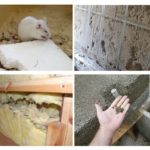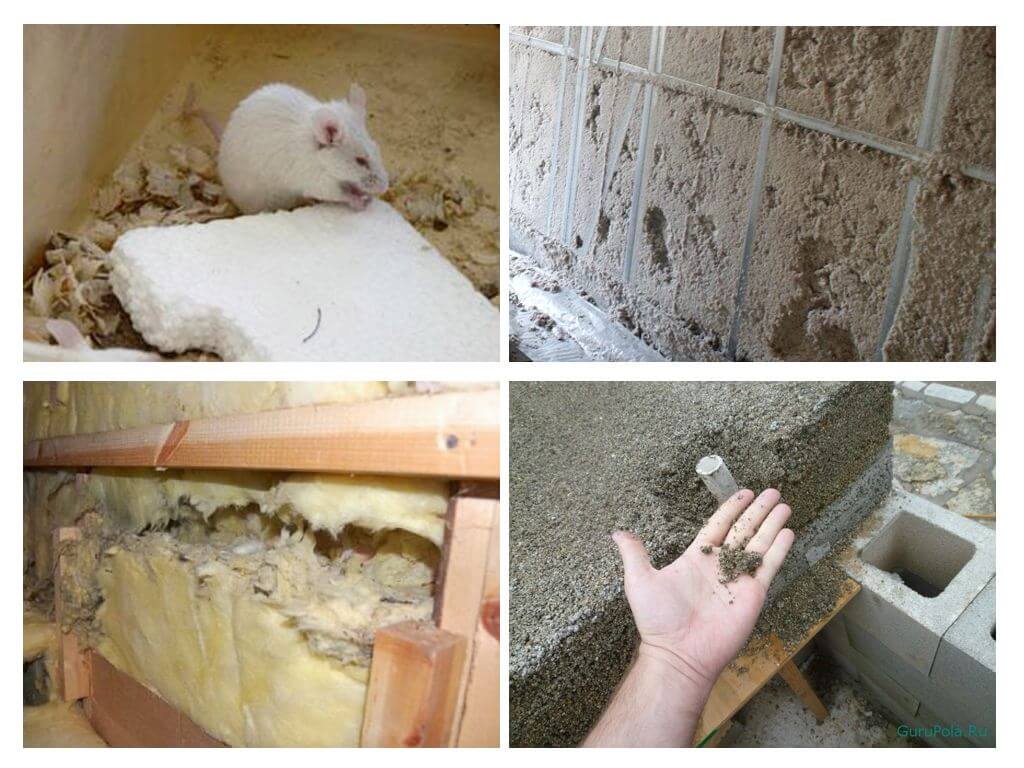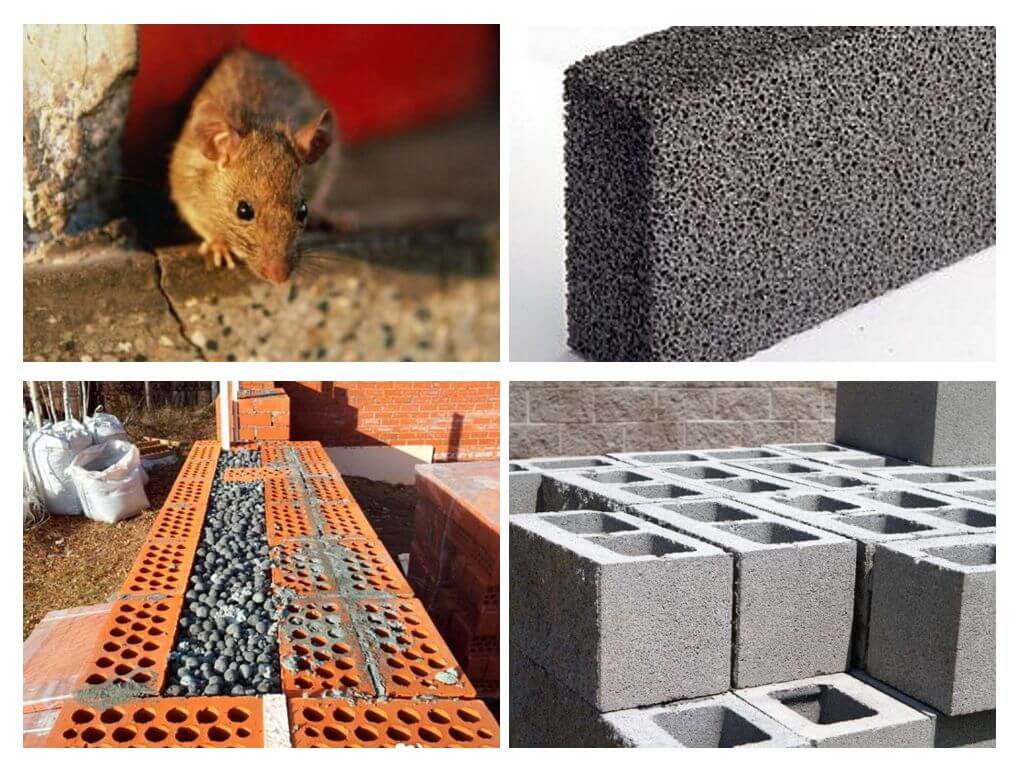What kind of insulation do not eat mice
Content
- Heater and Rodents
- What do not gnaw the mouse
- Ecowool and mice
Any private house needs additional weatherization. And here before the owner the question arises - what kind of insulation does the mouse not bite. After all, pests love places where it is warm and dry. There they make nests and dig for power supplies. It is very difficult to corrode mice from a heater, and the material loses its properties due to the animals.
There are two large groups of insulation: organic and inorganic. Mice nibble there are more materials belonging to the first group, but there is also a heater in the second group, which will be harmful for pests.
Organic insulation
For their production used waste woodworking and agricultural production. Some species contain cement and plastic.
Treat such heaters:
- Ecowool Made from waste paper production.
- Fiberboard. Consists of wood chips.
- Sotoplast. It is made in the form of honeycombs, the filler of which is a special fabric or paper.
- Polyethylene foam. Made from polyethylene and a blowing agent.
- Styrofoam. Better known as Styrofoam.
- Polyurethane foam. Used for processing the ceiling and walls.
- Chipboard and hardboard. Contains wood waste.
- Wood concrete It is made of shavings, sawdust, reeds and straw.
Any of these materials, the mouse quietly gnawed and arranged inside the shelter. In a wooden house it is often used for warming straw, in which pests feel comfortable.
Inorganic insulation
These materials mouse gnaw can not.They are solid, and inside it is impossible to be due to the small amount of oxygen.
On a note!
Insulation is made of slag, glass, asbestos and rocks. It is hard and loose and can be made in the form of plates, mats, rolls.
This group includes:
- Mineral wool. It happens stone and slag. Stone wool is made from rocks. The second type is made from slags, which are obtained during the casting of metal. Mice in mineral wool do not start, but can gnaw through it.
- Glass wool. It is made from the same materials as glass or from glass production wastes. It includes the following types of insulation: basalt wool (fiberglass) and slag. Its most famous manufacturer "Izover".
- Perlite and vermiculite. Loose and hard. This insulation does not eat a mouse, because it is very hard for their teeth.
- Foam concrete and aerated concrete. Used when working with the ceiling, walls and floor.
- Penoizol. Expensive insulation that can be used in a built house.
In inorganic insulation rodents do not start. But in mineral wool it is easy for them to make moves. House mice in glass wool, too, are able to gnaw through the hole to the food source.
On a note!
Waterproofing films are often placed on top of insulation. They help to preserve the structure from excess moisture and prolong the service life of the insulating material.
For the protection and insulation of pipes is usually used fiberglass, which rodents do not favor.
What the mice won't bite
There are no mice in solid insulation. They simply cannot make a hole for themselves in these materials.Foam glass
It has sufficient strength, thereby protecting the house from the invasion of rodents and insects. There are two types:
- bulk;
- tiled.
The first type is used when you want to insulate the floors, ceilings and ceilings. Plates are used for wall insulation.
Foamglass has the following advantages:
- Does not emit harmful fumes into the environment and is safe for human health.
- Allows you to use jigsaw or hacksaw, so it is easy to work with him.
- Insulation is not affected by sunlight or moisture. It is durable and easy to operate.
- Rodents are not able to gnaw a hole in it.
- Prevents the appearance of fungus.
Although this heater does not like mice, they can enter the room through the seams between the slabs.To prevent this from happening, you should use a sealant and lay the material on the solution, the quality of which was confirmed by positive reviews.
Expanded clay
It is made of special clay, which is cleaned, and then formed into granules with a diameter of 10 to 25 mm. The granules are hardened at high temperatures, increasing their strength and reducing weight.
Interesting!
More often, expanded clay is warmed attic floors and basements, but the material can also be used for walls.
Mice in the walls covered with claydite cannot move. They will simply drown in small fractions. The dust contained in the heater will not allow rodents to breathe properly and will clog their nose, and the teeth of mice and rats will break on strong balls. In such conditions, animals do not survive.
The material has the following advantages:
- It warms the walls well.
- It has zero fire hazard.
- Do not let extraneous sounds.
- Inexpensive and durable.
- Provides reliable waterproofing.
Expanded clay is not used to warm the walls of a wooden house. Brick walls are insulated during the construction phase.
Clay balls insulate and underground. For this, small granules are selected and laid using the “dry screed” technology. Expanded clay in this case can be poured on the ground or on concrete.
Foam concrete
It is made in the form of blocks and in the form of a solution. The latter type is good because it has no seams through which mice and rats can penetrate into a man’s house.
Insulators are treated with brick walls from the street or poured into the masonry during construction work.
Interesting!
Foam concrete is made of sand, water, a foaming agent and cement. After solidification, it becomes very hard. And if builders are concerned about the issue in which insulation does not start the mouse, you should pay attention to this material. Rodents will avoid it.
Blocks are used for wall insulation. The solution warms the floor. The material has many advantages:
- Foam blocks houses are warm, quiet and durable.
- Insulation does not absorb moisture and does not crack.
- Rodents, ants and cockroaches cannot live in it.
- Laying the blocks is easy because they are lightweight.
- The material is easy to process. It is sawed, cut and drilled if there is a need for it.
Insulation is not used indoors, because in its joints condensation may form, which will cause the development of mold fungi.
Ecowool
Insulation is a new material in construction, but it is becoming increasingly popular, despite the high cost. Fiber can be applied only with special equipment. After it hardens, it is leveled with a roller.
Thermal insulation material from cellulose is produced. It can be placed inside and outside the building, it has no flaws in use.
The advantages of ecowool are as follows:
- It is safe for humans and animals that live indoors.
- Drowns out any noise that makes the street and keeps the heat inside the housing.
- Does not decay and does not decompose.
- It has a low fire hazard because it actively emits moisture when heated.
The material is light and soft, so some do not understand why mice and rats cannot nibble it. The fact is that ecowool contains orthoboric acid. It causes a dyspnea and dehydration in the living creatures. If the pest wishes to make a nest in the material, he will not be able to live there for long.
The acid is still endowed with antiseptic properties, and it is this that prevents cotton from catching fire when heated.
How to protect insulation
So that you don’t have to think about how to get rid of mice in a heater and spend money on new material, you should take care of the safety of your home during construction.
The following points should be followed, and rodents will not be able to spoil the insulation or enter housing:
- To insulate the flooring use bulk material.
- Minimize the number of stitches during wall insulation.
- Use roofing material for roof insulation.
- To decorate the facade of the building with durable lining.
- Make a tape foundation.
It is necessary to take care of the type of insulation even before construction begins, because not all materials can be used when the building has already been commissioned.
If organic insulation is used in the house, then it should be rolled into concrete or overlaid with a fine mesh. In this case, the rodents will not be able to arrange a mouse hole in it.
Sometimes the mice still annoy the owners, despite all the work done. Then you have to deal with pests using available methods: turn on the ultrasonic repeller, set up mousetraps, lay out poisonous baits. In your house you can have a cat. Its smell will scare off rodents from human possessions.
Choose the appropriate type of insulation will help builders or consultants of the hardware store. You can order a suitable material via the Internet. It will be delivered wherever you are - in Moscow, St. Petersburg or a small town.








 (votes: 12, Average rating: 4.75 out of 5)
(votes: 12, Average rating: 4.75 out of 5)


